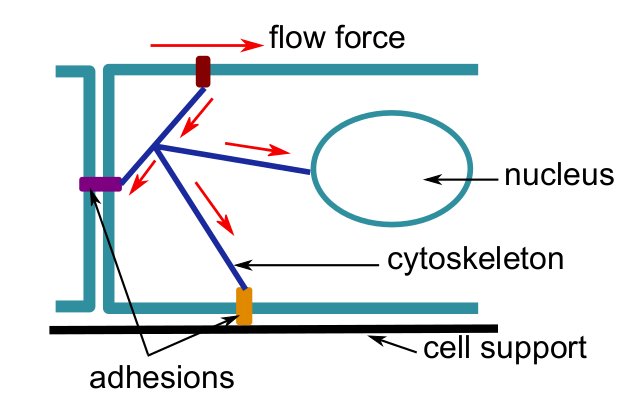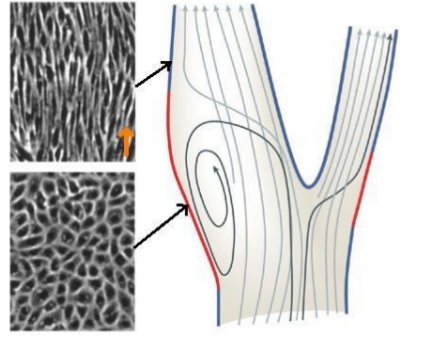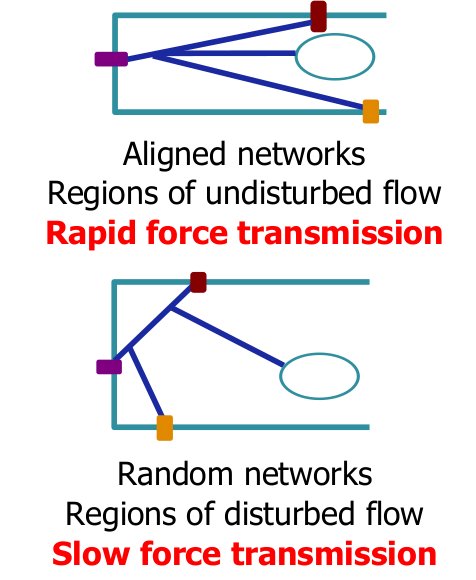Biomécanique cardiovasculaire
C.L.M. Gouget - Y. Hwang - A. I. Barakat
Publications
Gouget CL, Hwang Y, Barakat AI. Model of cellular mechanotransduction via actin stress fibers.
Biomech Model Mechanobiol. 2015 Jun 17:1-14. preprint
Hwang Y, Gouget CL, Barakat AI. Mechanisms of cytoskeleton-mediated mechanical signal transmission in cells.
Commun Integr Biol. 2012 Nov 1;5(6):538-42. preprint
How do cells respond to mechanical stimulation ?
Why?
Cells are constantly subjected to mechanical forces and these forces regulate cell structure and function. Thus, in arteries, cells in regions of disturbed flow have an abnormal behavior, and vascular disease tends to appear in these regions, marked in red in Fig. 1.
How ?

We are studying force transmission in a model cytoskeleton (Fig. 2) consisting of network of beams that are either randomly oriented or directionnally aligned (Fig. 3)
Results
Our results (Fig. 3) provide insight into the different mechanisms at stake in healthy and diseased arterial regions.



